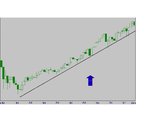SOCRATES
Veteren member
- Messages
- 4,966
- Likes
- 136
well, dont need to use matches to light the candles, now do we 😆
i wonder what inherent capability may a candle have to move prices 😱 😆 😆
saludos
jacinto
That is not the end of the story, because the other one....u may or may not...unohoo...now chips in to support the argument vociferously arguing that in addition it is the MACD that supports the whole idea, just like a tram on railway lines on a predetermined path that cannot be stopped.
Saludos con afecto.

